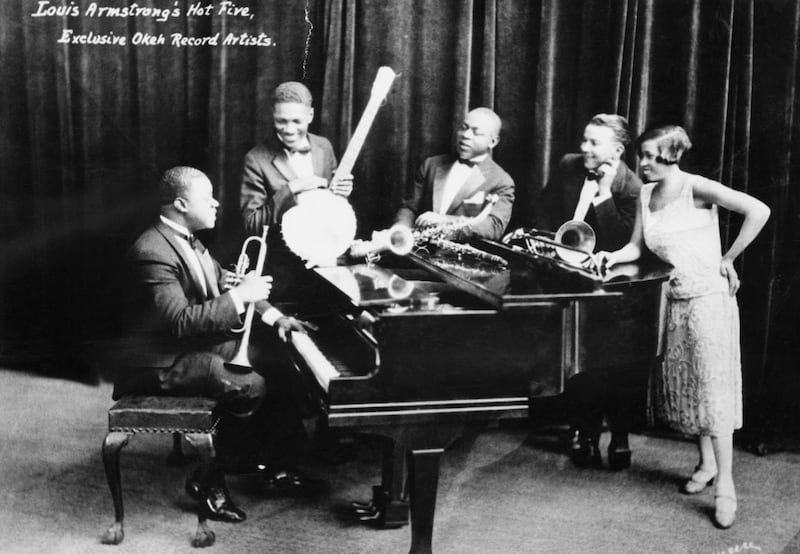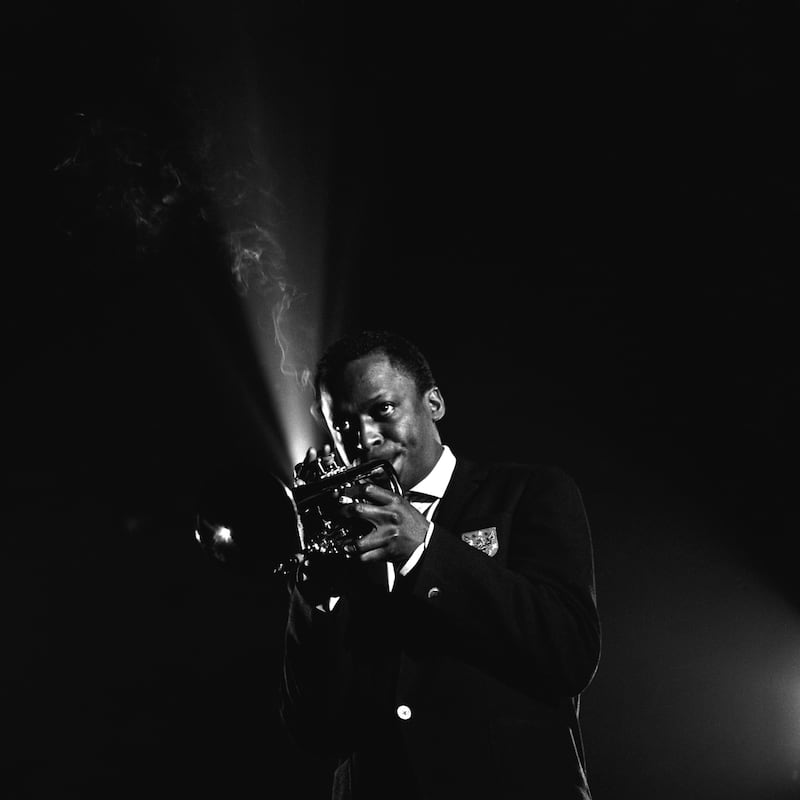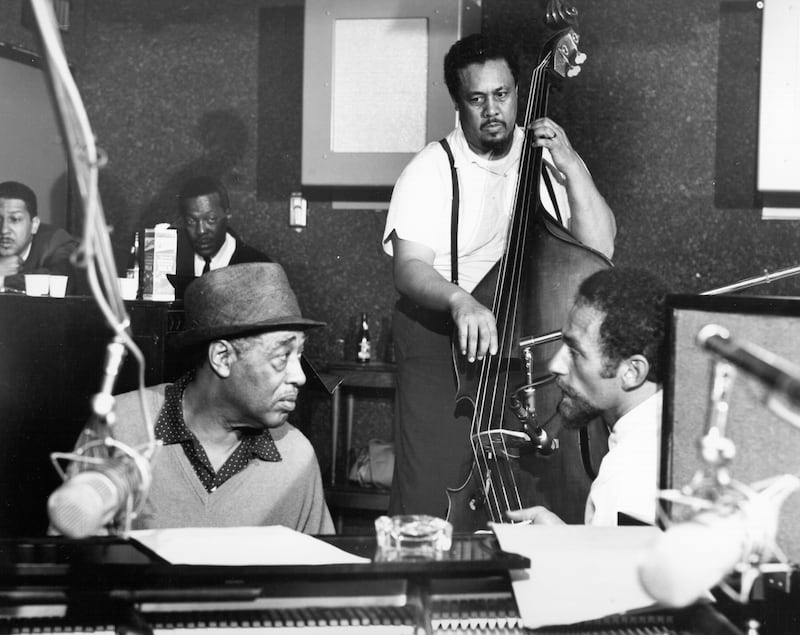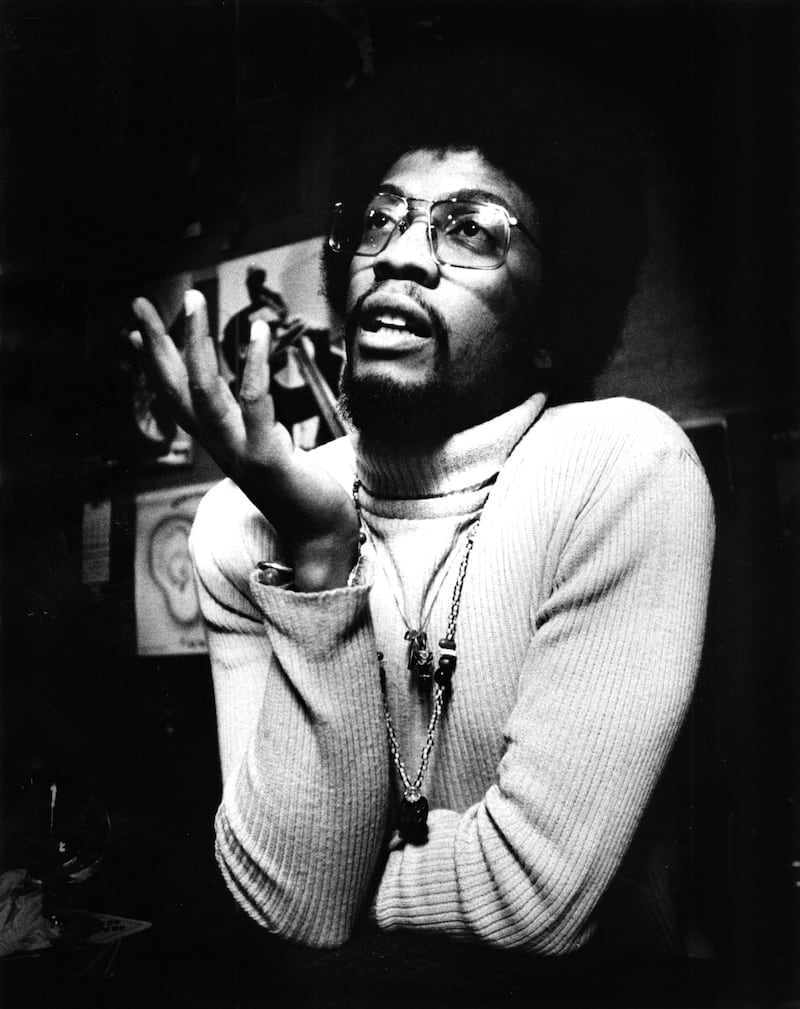Writing about music is like dancing about architecture, Thelonious Monk (allegedly) reckoned. So, with Cork Jazz Festival about to start, here’s a boogie-woogie through jazz’s hall of fame via 10 classic albums that should be in any self-respecting finger-clicker’s collection.
Hot Fives & Sevens
Louis Armstrong (2000)
Arguably the single most significant influence on jazz, Louis Armstrong pretty much revolutionised the genre with his Hot Fives & Hot Sevens – the Hot Five, which included his wife, Lil Hardin Armstrong, on piano, was the first recording band Satchmo led under his own name. And it was with the Hot Five that Armstrong pretty much invented jazz improvisation and changed jazz forever. Hot Fives & Sevens is a compilation of double A-side tracks laid down between 1925 and 1928 (but not released in toto until 2000) with a small army of musicians. It would take much of the page to list them all, but notables included Jack Teagarden, Earl Hines, Boyd Atkins and Hoagy Carmichael. And while Armstrong didn’t actually invent scat, it was his scatting on Heebie Jeebies (after dropping his sheet music during the recording, according to Johnny St Cyr) that brought the New Orleans vocal style to a whole new audience. All together now: skiddley-boo-tah-ka-boodle-eye-boop!

Bird’n’Diz
Charlie Parker/Dizzy Gillespie (1950)
The saxophonist Charlie “Bird” Parker and the trumpeter Dizzy Gillespie were jazz firebrands who revolutionised a genre characterised by big band and swing with their incendiary “bop” stylings. Long-term collaborators who hadn’t played together since 1945, the pair were reunited in 1950 for a studio album that also featured Buddy Rich on drums and Thelonious Monk on piano. That the studio didn’t self-combust is a minor miracle: from the bluesy Bloomdido to a unique take on My Melancholy Baby, Bird’n’Diz is bop refined to pure musical fire. Team it with the live album Jazz at Massey Hall, on which Bud Powell replaces Monk on piano and Charles Mingus jumps in on bass, and you have the complete bop primer.
Super-Sonic Jazz
Sun Ra (1956)
Only the second studio album from Sun Ra (born Herman Poole Blount), Super-Sonic Jazz is a deep, deep dive into blues-influenced jazz from the Alabama-born but Chicago-formed keyboardist, reinventing swing, ragtime and New Orleans hot jazz along the way. Its track India sets the tone for the kind of East-meets-West fusion that Dave Brubeck, for one, would later capitalise on. The emphasis here is on the individual musician’s freedom to experiment and extemporise (Sunology, Blues at Midnight); it’s not a perfect album, but it still sounds fresh and radical today. God only knows what it sounded like to the far-out daddios back then.
READ MORE

Birth of the Cool
Miles Davis (1957)
It’s hard to look past Kind of Blue, his 1959 album, when it comes to Miles Davis, but as every home should already have a copy, we’ll peer into the past to Birth of the Cool, which was the first major recording of the postbop era. Graduating from Charlie Parker’s quintet in the late 1940s, Davis “adopted a more lyrical approach to improvisation”, according to the great jazz biographer Ted Gioia, developing a style that emphasised paired instrumentation and the kind of polyphony we find on Birth of the Cool. The recording featured that man Max Roach once more on drums, with Gerry Mulligan on baritone sax and Al Haig on piano. Move, Jeru, Venus de Milo and Boplicity are just some of the stone-cold “cool jazz” classics that result.
Jazz Impressions of Eurasia
Dave Brubeck Quartet (1958)
Time Out, the first jazz album to sell more than a million copies, is an easy-listening affair that belies complex themes and challenging time signatures, most notably with the Paul Desmond-penned Take Five, which was written in 5/4 time. Yet it’s still not as accomplished as Jazz Impressions of Eurasia, which was stimulated by the quartet’s state-sponsored tour of Eurasia and is chock-a-block with unconventional contrasts in tonalities and rhythms, a consequence of Brubeck blending world music and European classical influences into the jazz format. Reflective, delicate, precise: tracks such as the Bach-inspired Brandenburg Gate, Blue Rondo à la Turk and Calcutta Blues opened a window on to a whole new musical landscape.
Africa/Brass
John Coltrane (1961)
As with Kind of Blue, so it is with John Coltrane’s meisterwerk A Love Supreme – if you don’t already own a copy, you’re probably not reading this article. Africa/Brass was received rather poorly on its initial release in 1961, perhaps because the critics were expecting something a little different from Coltrane’s eighth studio album but maybe not something quite as different as this. Coltrane takes tenor and soprano saxophone, with Booker Little on trumpet, McCoy Tyner on piano and Elvin Jones working the drums (with Freddie Hubbard and Eric Dolphy lending a hand where required), and while there are only three tracks on the original release, they’re epic – Africa, in particular, always sounds and feels as if it should only ever be played in a cathedral, in part because of Reggie Workman’s phenomenal bass. There is also, once you’ve peeled yourself off the floor, an Africa/Brass Vol 2 from the same session. Treat yourself.
[ Music 10 of the best John Coltrane tracksOpens in new window ]

Money Jungle
Duke Ellington (1962)
It don’t mean a thing, as the man said, if it don’t have that swing. Duke Ellington was acclaimed as “the most significant composer of the genre”, although the Duke himself preferred the title “beyond category”. Graduating from Harlem’s Cotton Club, this master pianist, in association with the composer and arranger Billy Strayhorn, would go on to redefine what swing jazz was capable of achieving. But while Masterpieces (1951) delivered classic cuts such as Solitude and Mood Indigo, Money Jungle was a more intimate affair. A three-piece featuring Ellington on piano, Charles Mingus on bass and (inevitably) Max Roach on drums, the album was recorded in one day – September 17th, 1962 – with the three musicians declining to rehearse any of the music. It’s a late-career masterpiece.
Tijuana Moods
Charles Mingus (1962)
The self-referential Mingus Ah Um (1959) – an uncompromising slab of pioneering postbop – and Mingus, Mingus, Mingus, Mingus, Mingus (1964) speak to the great bassist’s wholly justified self-confidence, but if you’re looking for something a little offbeat, the Spanish-inflected Tijuana Moods (recorded in 1957 but released in 1962) might be the one for you. The brass section of Shafi Hadi, Clarence Shaw, Curtis Porter and Jimmy Knepper might not be household names, but Mingus wrung the very last drop from his collaborators – Mingus himself declared Tijuana Moods to be his finest offering. The album also features arguably the finest castanet work to be found on any jazz classic, courtesy of Ysabel Morel, who contributed vocals too. Mingus might not have been the easiest bandleader to work with – Clarence Shaw, apparently, broke his trumpet and packed in music as a result of an row with Mingus shortly after recording Tijuana Moods – but this kind of perfect doesn’t come easy.
[ Guy Barker: ‘all the rock’n’rollers love Charles Mingus’Opens in new window ]

Man-Child
Herbie Hancock (1975)
Throw a dart at Herbie Hancock’s catalogue and you won’t go far wrong. He’d already written Watermelon Man by the time he joined Miles Davis’s Quintet, and delivered a slew of sublime albums as a bandleader – Takin’ Off (1962), Empyrean Isles (1964), Maiden Voyage (1965) – straight out of the gate. But it’s to Hancock’s game-changing reinvention as a funkster that we go; the purists might prefer Headhunters (1973), but Man-Child delivers full-phat funk that somehow sounds as if it provided the score to every cool 1970s movie ever made. Tightly built around repeated riffs from guitar, horns and rhythm section from the very first track (Hang Up Your Hang Ups), Man-Child reins in the improvisation while blowing the ruddy doors off.
Introducing
Brad Mehldau (1995)
That Brad Mehldau has toured and recorded with Pat Metheny and Anne Sofie von Otter, among many others, should give you a sense of the pianist’s diversity of musical interests. That restless, wide-ranging imagination is crystallised on Introducing, where Mehldau, whose early development was heavily influenced by Keith Jarrett, teams up with Larry Grenadier and Christian McBride (bass) and Jorge Rossy and Brian Blade (drums) for a blend of delicately off-kilter originals and judiciously chosen covers (some Rogers & Hammerstein, a little Coltrane, a touch of Cole Porter). The Penguin Guide to Jazz declared of Introducing that “it’s as if he were aware of jazz tradition but entirely unencumbered by it”. And, really, they should know.
[ Is jazz dead? It smells just fine to Brad MehldauOpens in new window ]
Cork Jazz Festival starts on Thursday, October 26th, and runs until Monday, October 30th


















